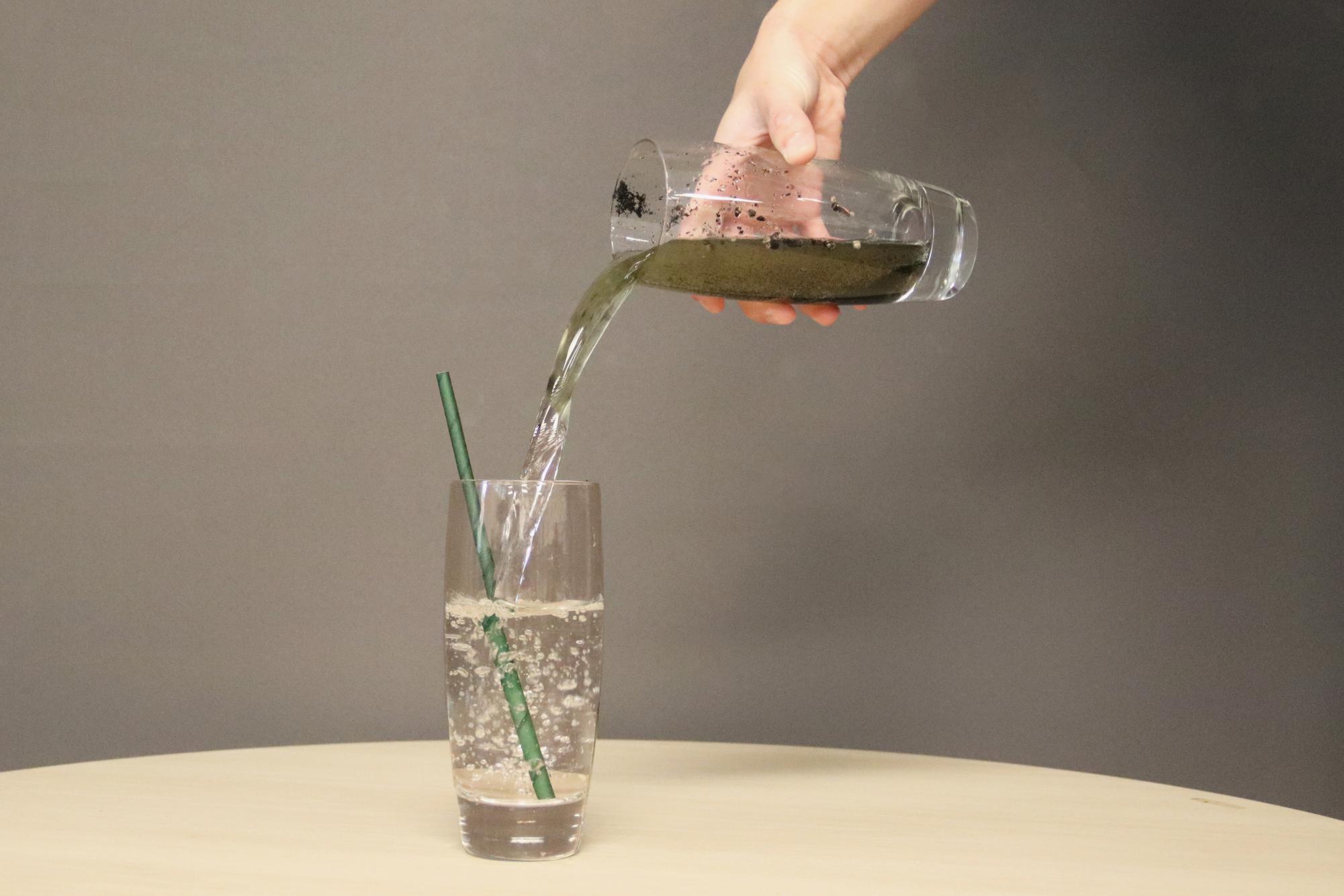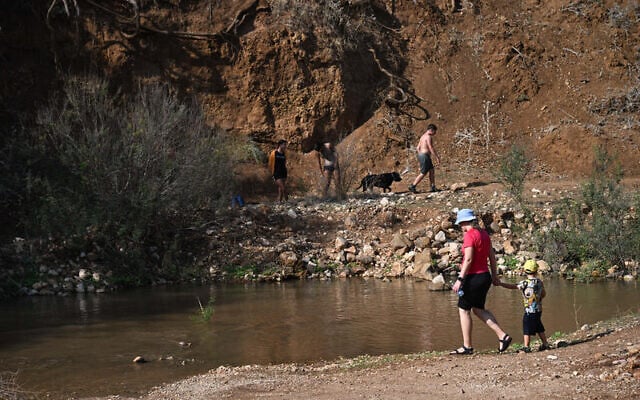San Mateo opens $1 billion advanced wastewater treatment facility – Wastewater Digest

Project Overview and Contribution to Sustainable Development
On September 24, federal, state, and local officials inaugurated the completion of San Mateo’s new Wastewater Treatment Plant. As the largest component of the city’s $1 billion Clean Water Program, the facility represents a significant investment in sustainable infrastructure. It replaces a 75-year-old system to enhance public health, protect the San Francisco Bay ecosystem, and align with multiple United Nations Sustainable Development Goals (SDGs).
Alignment with Key Sustainable Development Goals (SDGs)
SDG 6: Clean Water and Sanitation
The project directly advances the goal of ensuring available and sustainable management of water and sanitation for all through several key features:
- Modernization of critical sanitation infrastructure to serve over 170,000 residents.
- Complete elimination of sewer overflows, a major source of water contamination.
- Implementation of advanced water treatment technologies for improved water quality.
SDG 11: Sustainable Cities and Communities
The facility strengthens urban resilience and sustainability by:
- Developing resilient infrastructure capable of managing peak wet-weather flows and preventing neighborhood flooding via a 5.3-million-gallon underground storage system.
- Incorporating sustainable building practices, evidenced by the LEED Silver–certified administration building.
- Enhancing community spaces through the addition of public amenities, including landscaped pathways and educational signage.
SDG 14: Life Below Water
The plant contributes to the conservation and sustainable use of marine resources by:
- Safeguarding the San Francisco Bay ecosystem from pollution.
- Utilizing advanced five-stage Biological Nutrient Removal to reduce harmful nutrient discharge into the bay, protecting marine life.
SDG 9: Industry, Innovation, and Infrastructure
The project showcases innovation in building resilient and sustainable infrastructure through:
- The integration of one of the world’s largest BioActiflo systems, capable of treating up to 78 million gallons per day.
- The use of advanced Membrane Bioreactor systems for high-level wastewater treatment.
Project Implementation and Collaborative Efforts
SDG 17: Partnerships for the Goals
The project’s success is a model for multi-stakeholder collaboration, a core principle of SDG 17. Key partnerships included:
- Federal, state, and local government agencies providing oversight and funding.
- Regional partners, including the City of Foster City, ensuring benefits across multiple jurisdictions.
- A private sector design-build team comprising HDR, Jacobs, and Sundt Construction.
- The U.S. Environmental Protection Agency (EPA), which provided critical financing.
Financial Framework
- The project was supported by a $277 million low-interest Water Infrastructure Finance and Innovation Act (WIFIA) loan from the U.S. EPA.
- This financing structure provided significant cost savings for local ratepayers, ensuring the project’s economic sustainability.
Project Timeline
- Construction commenced in 2019.
- The new facility was successfully constructed while the existing 75-year-old plant remained fully operational, ensuring uninterrupted service.
Analysis of the Article in Relation to Sustainable Development Goals
1. Which SDGs are addressed or connected to the issues highlighted in the article?
-
SDG 6: Clean Water and Sanitation
- The article’s primary focus is the completion of a new Wastewater Treatment Plant. This directly relates to ensuring the availability and sustainable management of water and sanitation. The project’s goals to “eliminate sewer overflows,” introduce “advanced nutrient removal,” and protect “public health” are central to SDG 6.
-
SDG 9: Industry, Innovation, and Infrastructure
- The project involves building resilient and sustainable infrastructure. The article highlights the replacement of “75-year-old infrastructure” with a “modernized facility” featuring advanced technologies like a “BioActiflo system” and a “Membrane Bioreactor.” The LEED Silver certification of the administration building further emphasizes the focus on sustainable infrastructure.
-
SDG 11: Sustainable Cities and Communities
- The new plant makes the community more resilient to climate-related hazards. Its features for “stormwater management,” prevention of “neighborhood flooding,” and management of “peak wet-weather flows” contribute directly to making the city safer and more sustainable.
-
SDG 14: Life Below Water
- A key objective of the project is to “safeguard San Francisco Bay.” By implementing “advanced nutrient removal” and eliminating sewer overflows, the plant reduces land-based pollution, which is crucial for protecting marine ecosystems and conserving coastal and marine resources.
-
SDG 17: Partnerships for the Goals
- The article emphasizes the collaborative nature of the project. It mentions the involvement of “Federal, state and local officials,” a “regional partnership” benefiting multiple jurisdictions, and a significant low-interest WIFIA loan from the U.S. EPA, showcasing a multi-stakeholder partnership to achieve the goals.
2. What specific targets under those SDGs can be identified based on the article’s content?
-
Target 6.3: By 2030, improve water quality by reducing pollution, eliminating dumping and minimizing release of hazardous chemicals and materials, halving the proportion of untreated wastewater and substantially increasing recycling and safe reuse globally.
- The plant’s function to “eliminate sewer overflows” and use “advanced nutrient removal” directly addresses the goal of improving water quality by reducing pollution and increasing the proportion of safely treated wastewater.
-
Target 9.1: Develop quality, reliable, sustainable and resilient infrastructure, including regional and transborder infrastructure, to support economic development and human well-being, with a focus on affordable and equitable access for all.
- The construction of a “modernized facility” to replace aging infrastructure, serving over 170,000 residents, is a clear example of developing sustainable and resilient infrastructure.
-
Target 11.5: By 2030, significantly reduce the number of deaths and the number of people affected and substantially decrease the direct economic losses relative to global gross domestic product caused by disasters, including water-related disasters, with a focus on protecting the poor and people in vulnerable situations.
- The plant’s capacity to “prevent neighborhood flooding” and manage “peak wet-weather flows” through its large storage and treatment systems directly contributes to mitigating the impact of water-related disasters.
-
Target 14.1: By 2025, prevent and significantly reduce marine pollution of all kinds, in particular from land-based activities, including marine debris and nutrient pollution.
- The project’s explicit goal to “safeguard San Francisco Bay” through “advanced nutrient removal” is a direct action to reduce nutrient pollution from a land-based source.
-
Target 17.17: Encourage and promote effective public, public-private and civil society partnerships, building on the experience and resourcing strategies of partnerships.
- The collaboration between federal, state, and local governments, along with the financial partnership with the U.S. EPA, exemplifies the multi-stakeholder approach promoted by this target.
3. Are there any indicators mentioned or implied in the article that can be used to measure progress towards the identified targets?
-
For Target 6.3:
- The article implies progress can be measured by the elimination of sewer overflow events and the level of nutrient reduction in the treated water discharged into San Francisco Bay.
-
For Target 9.1:
- Indicators include the number of residents served (170,000) by the new infrastructure and the achievement of a LEED Silver certification for the administration building, which quantifies its sustainability.
-
For Target 11.5:
- The plant’s capacity is a direct indicator of resilience. Specific metrics mentioned are its ability to treat up to 78 million gallons per day during storms and the 5.3-million-gallon capacity of the underground flow equalization system. These figures measure the increased capacity to manage disaster-related water flows.
-
For Target 14.1:
- An implied indicator is the reduction in nutrient load (e.g., nitrogen, phosphorus) discharged into the bay, which can be measured through water quality monitoring. The implementation of “advanced nutrient removal” technology is a direct process indicator.
-
For Target 17.17:
- The $277 million low-interest WIFIA loan from the U.S. EPA is a quantifiable indicator of the financial partnership mobilized for sustainable development.
4. Summary Table of SDGs, Targets, and Indicators
| SDGs | Targets | Indicators |
|---|---|---|
| SDG 6: Clean Water and Sanitation | 6.3: Improve water quality by reducing pollution and increasing the proportion of safely treated wastewater. | Elimination of sewer overflow events; Level of nutrient reduction in treated water. |
| SDG 9: Industry, Innovation, and Infrastructure | 9.1: Develop quality, reliable, sustainable and resilient infrastructure. | Number of residents served (170,000); LEED Silver certification. |
| SDG 11: Sustainable Cities and Communities | 11.5: Reduce the impact of water-related disasters. | Treatment capacity of 78 million gallons per day during storms; 5.3-million-gallon storage capacity to prevent flooding. |
| SDG 14: Life Below Water | 14.1: Prevent and significantly reduce marine pollution from land-based activities. | Implementation of “advanced nutrient removal” technology; Reduction in nutrient load discharged into San Francisco Bay. |
| SDG 17: Partnerships for the Goals | 17.17: Encourage and promote effective public partnerships. | Mobilization of a $277 million loan from a federal agency (U.S. EPA); Collaboration between federal, state, and local officials across multiple jurisdictions. |
Source: wwdmag.com

What is Your Reaction?
 Like
0
Like
0
 Dislike
0
Dislike
0
 Love
0
Love
0
 Funny
0
Funny
0
 Angry
0
Angry
0
 Sad
0
Sad
0
 Wow
0
Wow
0




















































.jpg.webp?itok=0ZsAnae9#)

























